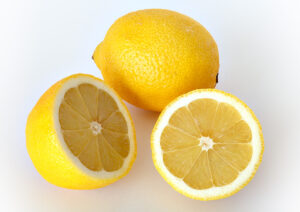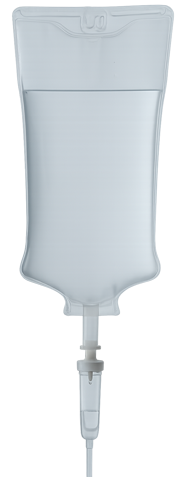 Ronald Grisanti D.C., D.A.B.C.O., D.A.C.B.N., M.S.
Ronald Grisanti D.C., D.A.B.C.O., D.A.C.B.N., M.S.
Can a simple staple sour fruit be helpful in the treatment and prevention of breast cancer? Well, a study at the University of Arizona Caner Center has revealed some promising news.
Before I share the study, it is first important to understand the significance of the fruit used in the study.
I am talking about lemons but more importantly I am referring to the peel of the lemon.
The peel of the lemon is an excellent source of naturally occurring terpenes. We commonly think of terpenes in cleaning products but there is a natural terpine called d-limonene.
D-limonene has shown in scientific studies to be valuable against a wide number of cancers.
In one promising study 43 women with newly diagnosed operable breast cancer electing to undergo lumpectomy were given 2 grams of limonene daily for two to six weeks before their surgery.
Results showed that d-limonene supplementation resulted in a 22% reduction in the expression of tumor markers.
The specific breast tumor marker measured in the study was cyclin D1.
Cyclin D1 is one of the frequently overexpressed proteins and one of the commonly augmented genes in breast cancer. The gene that leads to cyclin D1 formation is an estrogen-responsive gene. The overexpression of cyclin D1 occurs in more than half of invasive breast cancers.
Additional evidence shows that cyclin D1 interferes with the anti-cancer effect of tamoxifen in estrogen receptor-positive breast cancers – potentially accounting for treatment failure with tamoxifen therapy.
D-limonene can be found in most health food stores as a dietary supplement, however it can be easily obtained by eating a whole lemon more importantly the peel and inside spongy inner parts. The peel and inside of the lemon has the highest content of limonene. In fact the average sized lemon has about 300 mg of d-limonene.
Now if you are wondering how to eat the entire lemon including the peel, then look no further than a juicer or better yet a Vitamex.
Since lemon juice is usually too sour on its own, I recommend mixing it with other juices. Fortunately, adding ½ or 1 whole lemon (complete with peel) is an excellent addition to just about any fresh fruit or vegetable juice including green vegetable juices.
If you are going to juice whole lemons, be sure to choose organic versions.
Other dietary sources of terpenes are other citrus fruits, berries, cherries, and volatile herbs such as peppermint, basil, thyme, and rosemary.
To find a healthcare professional certified in functional medicine, go to www.FunctionalMedicineDoctors.com.These are clinicians who have been trained at Functional Medicine University (www.FunctionalMedicineUniversity.com)
Reference:
Miller JA, Lang JE, Ley M, et al. Human breast tissue disposition and bioactivity of limonene in women with early-stage breast cancer. Cancer Prev Res (Phila). 2013 Jun;6(6):577-84.
The information on this website is not intended to replace a one-on-one relationship with a qualified health care professional and is not intended as medical advice. It is intended as a sharing of knowledge and information from the research and experience of Dr. Grisanti and his functional medicine community. Dr. Grisanti encourages you to make your own health care decisions based upon your research and in partnership with a qualified health care professional. Visit www.FunctionalMedicineUniversity.com for more information on our training in functional medicine. Look for practitioners who have successfully completed the Functional Medicine University’s Certification Program (CFMP) www.functionalmedicinedoctors.com. This content may be copied in full, with copyright, contact, creation and information intact, without specific permission, when used only in a not-for-profit format. If any other use is desired, permission in writing from Dr. Grisanti is required.






